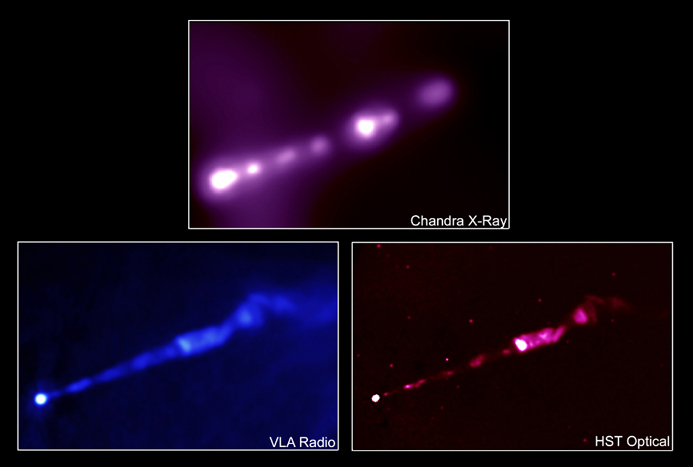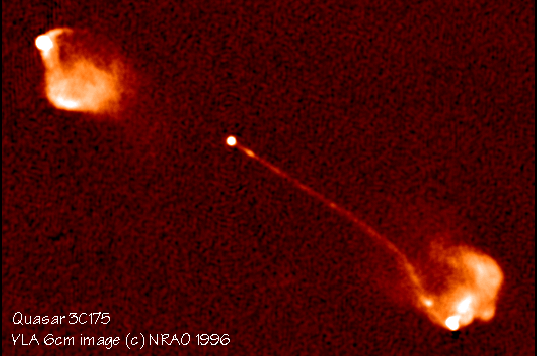Relativistic jets
Yuri Lyubarsky
The primary observational fact that emerged from studies of a large class of astrophysical sources is the occurrence of highly collimated outflows. On a galactic scale, jets are found emerging from radio galaxies and quasars powered by the release of gravitational energy near the supermassive black hole at the galaxy's center. The observed velocities in these jets reach 0.999 of the speed of light. Similar jets, though on a much smaller scale, can develop around the accretion disks of neutron stars and stellar black holes; these systems are often called microquasars. The relativistic jets are also invoked to explain the powerful cosmic gamma-ray
bursts even though they could not be resolved by our telescopes. All cosmic jet sources may be connected by a common basic mechanism. A promising model is magnetohydrodynamic acceleration by rotating, twisted magnetic fields. The basic idea is that a strong magnetic field threading the rotating central object (black
hole and the surrounding accretion disk) serves to convert the rotational energy to the outward directed Poynting flux. We study the basic properties of such electromagnetic jets paying special attention to physical mechanisms responsible for the transformation of the electromagnetic energy into the plasma and radiation energy.
 |
 |
| Figure 1: Jet from the radio galaxy Virgo A in different bands. | Figure 2: Jet from the quasar 3C175. |